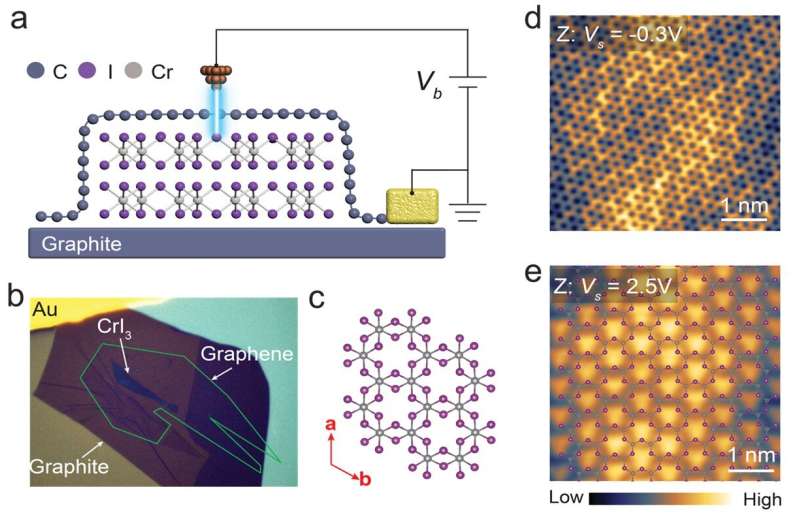Visualising atomic structure and magnetism of 2-D magnetic insulators

NUS scientists have demonstrated a general approach for characterizing the atomic structure and electronic and magnetic properties of two-dimensional (2-D) magnetic insulators using scanning-tunneling microscopy.
The recent discovery of 2-D magnets and the development of van der Waals (vdW) heterostructure engineering offer unprecedented opportunities not only to explore the exciting physics of magnetism in reduced dimensions, but also to develop new-generation spintronic devices for quantum technology applications. Further developments in this area involve the atomic-level understanding of electronic and magnetic properties of 2-D magnets and their heterostructures. Unfortunately, the direct application of conventional scanning tunneling microscopy (STM) techniques to learn more about the material properties does not work well for 2-D magnetic insulators. STM imaging relies on the quantum tunneling effect, whereby electrons tunnel from the atomically-sharp tip to the conducting samples or vice versa. It cannot be applied to study insulating bulk materials as there is an absence of a conducting path.
A NUS research team led by Prof Jiong Lu from the Department of Chemistry, NUS has demonstrated the application of STM to study insulating antiferromagnetic Chromium(III) iodide (CrI3) crystals by incorporating them with graphene-based vdW heterostructures (see Figure). This work is in collaboration with Prof Kostya S. Novoselov from the Department of Materials Science and Engineering, NUS. Their technique expands on the capability of STM by enabling it for studying insulating materials to gain insights about the magnetic ordering in 2-D magnets.
By capping the material under study with a single layer of graphene, the research team is able to obtain the stacking order and interlayer magnetic coupling of exfoliated CrI3 which is a few layers thick by using STM imaging at low temperature conditions. They also identified the magnetic structure and demonstrated that STM imaging can distinguish between the ferromagnetic and antiferromagnetic structures of CrI3 (few layers thick). This is due to the peculiar interaction of the magnetic states with the overlaying graphene.
Prof Lu said, "Our approach is general in nature, and it represents a breakthrough in the field of atomic-scale characterisation of the atomic structure, electronic and magnetic properties of various magnetic insulators and their vdW heterostructures. It can facilitate the development of 2-D magnetic insulators for next-generation spintronic devices
More information: Zhizhan Qiu et al. Visualizing atomic structure and magnetism of 2D magnetic insulators via tunneling through graphene, Nature Communications (2021). DOI: 10.1038/s41467-020-20376-w
Journal information: Nature Communications
Provided by National University of Singapore




















